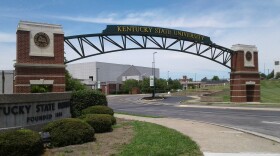First responders in west Kentucky say cross-agency communication is an issue in handling active shooter situations.
Agencies in Murray and Calloway County, including Emergency Medical Services, Fire and Rescue, law enforcement, emergency management and school representatives participated in a training session on Tuesday.
Murray-Calloway County Hospital EMS Director Marty Barnett said coordination between agencies can be difficult because each agency talks through a different radio channel.
“And that’s one of our biggest problems for years is everybody being able to communicate on the same channel. We try, but we just forget, because when you’re in the heat of the moment you stay on what you know,” Barnett said. “And switching to something new...it would be nice, but it’s like anything else - it takes money to get that together.”
Calloway County Sheriff Sam Steger proposed a temporary fix by establishing a communication post at the site of emergency situations.
The training session aimed to teach each agency what they would be responsible for during an active shooter situation and what steps can be taken to save the most lives.
Event organizer and Murray Fire Marshal Dickie Walls said the agencies didn’t need to know every detail about what another agency was doing, but just enough to coordinate in the most efficient matter.
“As fire service, I don’t need to know how the police take down the perpetrator, I don’t need to know how to clear the ‘hot zone,’” Walls said. “But I do need to know their communication and how they move through the building.”
Topics included the introduction of ‘hot’, ‘warm’ and ‘cold’ zones in relation to where the active shooter is located in the building and what parts of the perimeter have been cleared. Medics and other first responders would follow the lead of law enforcement, who would enter the building first to try and stop the shooter. Emergency first aid tactics including hemorrhage control and the use of tunicates were also discussed.
First responders shared recent first-hand experiences. Members of Murray and Calloway County EMS, Fire and Rescue and law enforcement assisted in response efforts during the deadly Marshall County High School shooting in January.
Barnett said the shooting made him reevaluate his own agency’s plans for responding to active shooter situations.
“You know you think about...you’re prepared for most anything. But when you get that call from Marshall County and they say they’ve had a school shooting and they need help... it’s an eye-opener. You worry about what can happen in your own backyard,” Barnett said.
While much of the conversation centered around school shootings, Walls said a majority of active shooter situations occur at workplaces. He said the agencies need to formulate plans to respond to shootings at places like chemical plants and factories.
Others proposed more interagency training and drills. Calloway Emergency Management Director Bill Call said two hazmat training sessions are scheduled in August. He said an emergency first aid class is also being considered.




